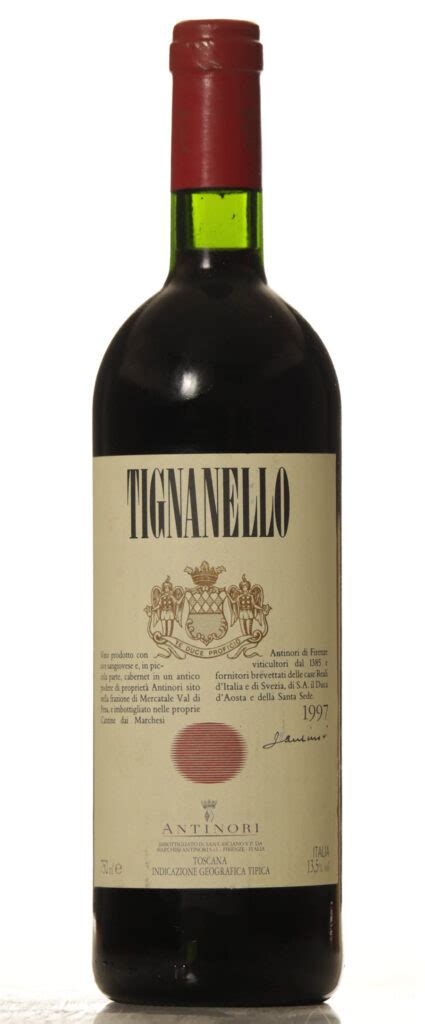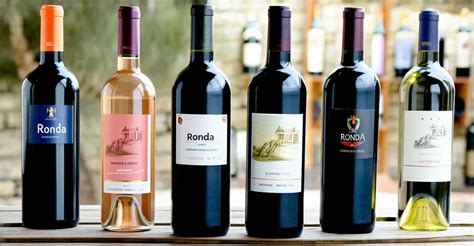The world of fine wines is a complex and nuanced one, with a myriad of factors contributing to the quality and character of a particular vintage. For the discerning collector or connoisseur, understanding the intricacies of the best vintages is essential for making informed decisions and appreciating the full richness of the wine-drinking experience. In this comprehensive guide, we will delve into the realm of mansion wines, exploring the most exceptional vintages and the elements that make them truly remarkable.
Historical Context: The Evolution of Fine Wines

To truly appreciate the best vintages, it is essential to understand the historical context in which they were produced. The art of winemaking has been refined over centuries, with various regions and producers contributing to the development of distinct styles and techniques. From the revered châteaux of Bordeaux to the esteemed estates of Burgundy, each region has its unique characteristics, shaped by factors such as climate, soil, and tradition.
The 20th century saw significant advancements in winemaking, with the introduction of new technologies and philosophies that enhanced the quality and consistency of fine wines. The 1980s, in particular, were a watershed decade, marked by a series of exceptional vintages that showcased the full potential of the world’s top wine regions. The 1982 Bordeaux vintage, for example, is still revered today for its opulence and complexity, with wines like Château Lafite Rothschild and Château Latour demonstrating unparalleled elegance and finesse.
Climate and Terroir: The Keys to Exceptional Vintages

When it comes to evaluating the best vintages, two factors stand out as paramount: climate and terroir. Climate, of course, refers to the weather conditions prevailing during the growing season, while terroir encompasses the unique combination of soil, topography, and microclimate that characterizes a particular vineyard or region. The interplay between these factors can result in vintages of remarkable quality, with wines that express the full depth and complexity of their terroir.
The 2015 vintage in Bordeaux, for instance, was marked by a warm and dry growing season, which yielded wines of extraordinary richness and concentration. The top estates, such as Château Margaux and Château Haut-Brion, produced wines that were at once powerful and refined, with a seamless integration of tannins and flavors. Similarly, the 2014 vintage in Burgundy was characterized by a cool and wet summer, which resulted in wines of striking acidity and minerality, with the top domaines, such as Domaine de la Romanée-Conti and Domaine Armand Rousseau, producing wines of breathtaking nuance and complexity.
Expert Insights: What the Top Winemakers Say
To gain a deeper understanding of the best vintages, we turned to some of the world’s top winemakers, seeking their insights and perspectives on the factors that contribute to exceptional wines. According to Jean-Guillaume Prats, the former CEO of Château Cos d’Estournel, “The key to a great vintage is a combination of factors, including a favorable climate, careful vineyard management, and a deep understanding of the terroir. When these elements come together, the result can be truly magical.”
Pierre-Henry Gagey, the president of Maison Louis Jadot, echoes this sentiment, noting that “The best vintages are those that strike a balance between power and elegance, with wines that are at once complex and refined. This requires a delicate touch in the vineyard and the cellar, as well as a profound understanding of the nuances of the terroir.”
As Gagey observes, "The 2010 vintage in Burgundy was a prime example of this, with wines that were both structured and refined, and a depth of flavor that was simply breathtaking."
Comparative Analysis: Evaluating the Top Vintages
When evaluating the best vintages, it is essential to consider the relative strengths and weaknesses of each region and producer. The 2009 vintage in Bordeaux, for example, was marked by a warm and dry growing season, which yielded wines of extraordinary richness and concentration. However, some critics have argued that the vintage was slightly overripe, with wines that lacked the acidity and freshness of the 2010 vintage.
In contrast, the 2013 vintage in Burgundy was characterized by a cool and wet summer, which resulted in wines of striking acidity and minerality. While some producers struggled with the challenging conditions, the top domaines produced wines of breathtaking nuance and complexity, with the 2013 vintage ultimately being regarded as one of the greatest of the past decade.
Decision Framework: Choosing the Best Vintages for Your Collection

For the discerning collector, selecting the best vintages can be a daunting task, with a myriad of factors to consider and a vast array of options available. To simplify the process, we have developed a decision framework that takes into account the key elements that contribute to exceptional wines.
- Region: Consider the region and its reputation for producing high-quality wines.
- Producer: Evaluate the reputation and track record of the producer, as well as their philosophy and approach to winemaking.
- Vintage: Assess the conditions of the vintage, including climate, soil, and weather patterns.
- Terroir: Consider the unique characteristics of the terroir, including soil, topography, and microclimate.
- Style: Determine the style of wine that you prefer, whether it be rich and full-bodied or elegant and refined.
Step 1: Evaluate the Region
Start by considering the region and its reputation for producing high-quality wines. Bordeaux, for example, is renowned for its rich and full-bodied wines, while Burgundy is prized for its elegant and refined Pinot Noirs.
Step 2: Assess the Producer
Evaluate the reputation and track record of the producer, as well as their philosophy and approach to winemaking. Look for producers who are committed to quality and have a deep understanding of the terroir.
Step 3: Consider the Vintage
Assess the conditions of the vintage, including climate, soil, and weather patterns. A warm and dry growing season, for example, may yield wines of extraordinary richness and concentration, while a cool and wet summer may result in wines of striking acidity and minerality.
Technical Breakdown: The Science of Winemaking
Winemaking is a complex and nuanced process, involving a delicate balance of art and science. From the vineyard to the cellar, each stage of the winemaking process requires careful attention to detail and a deep understanding of the underlying chemistry and biology.
One of the key factors in winemaking is the concept of phenolic maturity, which refers to the optimal level of ripeness and development of the grape skins, seeds, and stems. Phenolic maturity is critical in determining the quality and character of the wine, with underripe or overripe grapes resulting in wines that are either harsh and astringent or soft and flabby.
Another important factor is the use of oak aging, which can add complexity and depth to the wine, but also risks overpowering the delicate flavors and aromas of the grape. The type and quality of the oak, as well as the duration of the aging process, must be carefully managed to achieve the optimal balance of flavor and structure.
Future Trends: The Emerging World of Fine Wines
As the world of fine wines continues to evolve, several trends are emerging that are likely to shape the future of the industry. One of the most significant developments is the growing interest in sustainable and organic winemaking practices, with many producers adopting environmentally friendly techniques and certifications, such as biodynamics and organic farming.
Another trend is the increasing focus on terroir-driven wines, with producers emphasizing the unique characteristics of their vineyards and the importance of preserving traditional winemaking practices. This shift towards terroir-driven wines is likely to result in a greater diversity of styles and flavors, as producers seek to express the full complexity and nuance of their terroir.
Pros of Sustainable Winemaking
- Environmental benefits: Reduced carbon footprint, preserved biodiversity
- Improved wine quality: More nuanced and complex flavors, better acidity and structure
- Increased consumer demand: Growing interest in sustainable and organic products
Cons of Sustainable Winemaking
- Higher costs: Increased expense of sustainable practices, potential reduction in yields
- Challenges in implementation: Difficulty in adopting new practices, potential impact on traditional winemaking techniques
- Limited certification: Variability in certification standards, potential confusion among consumers
Conclusion: The Timeless Allure of Fine Wines
Fine wines have a timeless allure, with the ability to evoke emotions, spark memories, and bring people together in a way that few other experiences can. Whether you are a seasoned collector or a novice enthusiast, the world of fine wines offers a wealth of discovery and exploration, with each vintage and producer offering a unique perspective and expression.
As we have seen, the best vintages are those that strike a balance between power and elegance, with wines that are at once complex and refined. By understanding the factors that contribute to exceptional wines, including climate, terroir, and winemaking philosophy, we can appreciate the full richness and nuance of the wine-drinking experience.
Whether you are looking to build a collection, explore new wines, or simply appreciate the beauty of fine wines, we hope that this guide has provided a valuable resource and inspiration for your journey. Remember to always keep an open mind, to explore new regions and producers, and to never stop discovering the wonders of the wine world.
What are the key factors that contribute to exceptional vintages?
+The key factors that contribute to exceptional vintages include climate, terroir, and winemaking philosophy. A favorable climate, careful vineyard management, and a deep understanding of the terroir are essential for producing wines of extraordinary quality.
<div class="faq-item">
<div class="faq-question">
<h3>How do I choose the best vintages for my collection?</h3>
<span class="faq-toggle">+</span>
</div>
<div class="faq-answer">
<p>To choose the best vintages for your collection, consider the region, producer, vintage, terroir, and style of wine. Evaluate the reputation and track record of the producer, as well as their philosophy and approach to winemaking. Assess the conditions of the vintage, including climate, soil, and weather patterns, and consider the unique characteristics of the terroir.</p>
</div>
</div>
<div class="faq-item">
<div class="faq-question">
<h3>What are the trends shaping the future of the fine wine industry?</h3>
<span class="faq-toggle">+</span>
</div>
<div class="faq-answer">
<p>The trends shaping the future of the fine wine industry include the growing interest in sustainable and organic winemaking practices, the increasing focus on terroir-driven wines, and the emerging importance of digital platforms and e-commerce in the wine market.</p>
</div>
</div>
</div>


